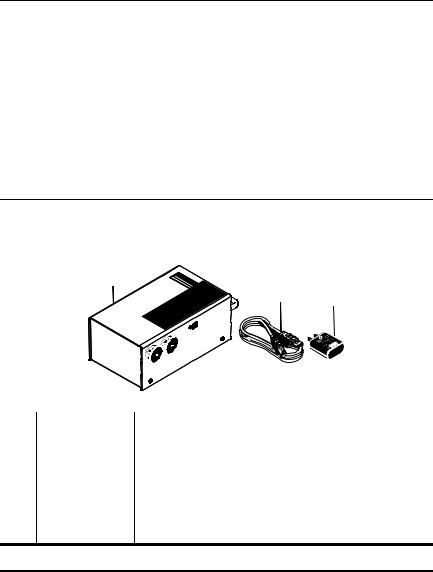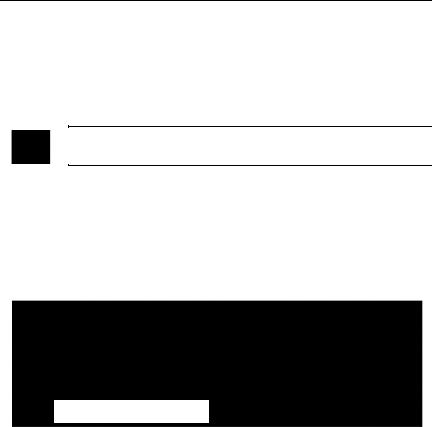Sun 1030 User Manual

RadonSentinJl™ User’s Guide
Accurate, Reliable, Economical
2TIJQ

User’s Guide, RadonSentinel™
© 2016 by Sun Nuclear Corporation. All rights reserved.
The information contained in this manual and the accompanying software program is copyrighted and all rights are reserved by Sun Nuclear Corporation. Copying, duplicating, selling, or otherwise distributing any part of this product without the prior written consent of Sun Nuclear Corporation is prohibited.
Sun Nuclear Corporation reserves the right to make periodic modifications of this product without obligation to notify any person or entity of such revision.
This guide is written for: |
|
Software version: |
3.0.3 |
Firmware version: |
1.1.8 |
Radon Sentinel™ and RadonSentinel™ are trademarks of Sun Nuclear Corporation.
Document 1030012, Rev E, 01 December 2016
Corporate Headquarters 3275 Suntree Boulevard Melbourne, FL 32940 USA +1 321-259-6862 www.sunnuclear.com
ii

Preface
Intended Use
The Model 1030 RadonSentinel is intended to be used by radon measurement professionals for measurement of the indoor radon level in human dwellings.
Application
CAUTION: Radon Sentinel Model 1030 should be used for indoor applications only. Using in an outdoor environment may cause errors due to humidity and extreme temperatures.
For a typical test, the radon monitor is set up in a building or structure to be monitored, and the device is left unattended for the required test duration. Ambient room air, laden with radon, diffuses into the radon monitor’s detection chambers. Gaps between the base and the cover allow air to freely pass into the radon monitor. Radon decay by-products emit alpha particles which are detected by the photo diodes and then counted. During a test, the number of counts produced by the alpha particles is stored in memory and converted into radon concentration (pCi/l) using the stored calibration factor. At the end of the test, the results can be viewed on the radon monitor display, on a computer screen, or in a printed report.
Health and Safety Instructions
WARNING: To avoid risk of electric shock, this device must only be connected to a supply mains with protective earth (ground).
WARNING: Never use the radon monitor in an area that could contain explosive gases. A spark from inside the radon monitor could ignite an explosion.
This equipment must be used in accordance with the instructions in this manual. Read all instructions and safety labels before use.
Inspect all cables periodically for damage. Do not use any cable that is damaged or has broken insulation. Replace the cable immediately. If any mechanical or electrical degradation is suspected, contact Sun Nuclear Corporation for repair or replacement.
Never pull on a cable to disconnect it. Always grasp the plug or connector.
iii

Check for physical damage prior to and after each use. If measurement errors or device damage are suspected, contact Sun Nuclear Corporation.
Do not permit water or any other liquids to spill onto the device.
This device is not intended to be used in an oxygen rich environment.
For instructions to report health or safety related concerns, see Reporting Health or Safety Related Issues or Concerns on page 30.
Regulatory Information
For a definition of the symbols used throughout this document and additional information related to user and device safety, see Regulatory Supplement on page 29. Review this information thoroughly before setting up and using the device.
Finding Additional Information
Online Help — Help is available by selecting Help > Contents from the Continuous Radon Monitor software application menu.
Sun Nuclear Corporation Radon website — Additional information is available on the Sun Nuclear website: https://support.sunnuclear.com/radon.
The U.S. Environmental Protection Agency (EPA) maintains a comprehensive radon website at: https://www.epa.gov/radon, where you can find EPA publications relating to radon, including:
•A Citizen's Guide to Radon: The Guide to Protecting Yourself and Your Family from Radon. This guidance offers strategies for testing your home for radon and discussions of what steps to take after you have tested.
•Consumer's Guide to Radon Reduction: How to Fix Your Home. This booklet is for people who have tested their home for radon and confirmed that they have elevated radon levels.
•Home Buyer's and Seller's Guide to Radon. This booklet is intended for anyone who is buying or selling a home, real estate and relocation professionals, and home inspectors.
Document Conventions
•Bold typeface indicates a button name or an entry that the user must type.
•Italicized typeface indicates the title of a manual, a cross-referenced subsection in this manual, or introduces a new term or phrase.
•Bold italicized typeface indicates a menu option.
•“Text in double quotes” indicates a message that is displayed to the user.
•‘Text in single quotes’ indicates the name of a window or dialog box.
•The Z suffix in a part number indicates a RoHS2 compliant part.
iv
Contents
Preface . . . . . . . . . . . . . . . . . . . . . . iii
Intended Use . . . . . . . . . . . . . . . . . . . iii Application . . . . . . . . . . . . . . . . . . . . . iii Health and Safety Instructions . . . . . iii Regulatory Information . . . . . . . . . . . iv Finding Additional Information . . . . . iv Document Conventions . . . . . . . . . . . iv
Introduction . . . . . . . . . . . . . . . . . . . 1
Description . . . . . . . . . . . . . . . . . . . . . 1 Parts . . . . . . . . . . . . . . . . . . . . . . . . . . .1 Options and Accessories . . . . . . . .2
Radon Sentinel Operation . . . . . . . 3
Connecting Power . . . . . . . . . . . . . . . 3 Inserting Batteries . . . . . . . . . . . . . .3 Connecting the AC Adapter . . . . . .4 Turning on the Display . . . . . . . . . . . . .4 Controls . . . . . . . . . . . . . . . . . . . . . . . .5 Configuring Parameters . . . . . . . . . . . .6
Setting Parameters Using
Radon Sentinel Keys . . . . . . . . .6 Personal Identification Number . . . . . .7 Lost PIN Recovery . . . . . . . . . . . . .7 Positioning the Monitor . . . . . . . . . . . .7 Checking Unit Status . . . . . . . . . . . . . .7 Starting a Test . . . . . . . . . . . . . . . . . . .8 Terminating a Test . . . . . . . . . . . . . . . .8
Displaying EPA, Average, and
Current Radon Values . . . . . . . . . .8 Clearing Memory . . . . . . . . . . . . . . . . .9 Replacing the Batteries . . . . . . . . . . . .9 Connecting Radon Sentinel to
Computer . . . . . . . . . . . . . . . . . . .10 Disconnecting the Radon
Sentinel . . . . . . . . . . . . . . . . . .10
Radon Monitor Software . . . . . . . 11
About the Software. . . . . . . . . . . . . . 11 System Requirements . . . . . . . . . . . .11 Setting Up the Software . . . . . . . . . .11 Installing the Software . . . . . . . . .11 Launching the Software . . . . . . . . . .13 Closing the Software . . . . . . . . . .13 Software Setup . . . . . . . . . . . . . . . . .13
Configuring Company
Information . . . . . . . . . . . . . . . .13 Radon Monitor Details . . . . . . . . .15
Retrieving Data From the Monitor . . 16 Displaying Test Summary Data . . . . 16 Setting Up Customer Information . . 17 Test Chart Views . . . . . . . . . . . . . 18 Saving a Test . . . . . . . . . . . . . . . . . . 19 Opening a Saved File . . . . . . . . . . 19 Previewing and Printing Test Data . . 20 Previewing Raw Data . . . . . . . . . . 20 Printing Raw Data . . . . . . . . . . . . 20 Customer Reports . . . . . . . . . . . . . . 21 Previewing Reports . . . . . . . . . . . 21 Printing Reports . . . . . . . . . . . . . . 22 Saving as PDF . . . . . . . . . . . . . . . . . . 22
Specifications . . . . . . . . . . . . . . . . 23
Model 1030 Radon Sentinel Specifications. . . . . . . . . . . . . . . . 23
Recommended System
Requirements . . . . . . . . . . . . . . . 24
Support and Maintenance . . . . . . 25
Maintaining Hardware . . . . . . . . . . . . 25 Parts and Repairs . . . . . . . . . . . . . 25 Storage . . . . . . . . . . . . . . . . . . . . . 25 Cleaning . . . . . . . . . . . . . . . . . . . . 25 Disposal and Recycling . . . . . . . . 25 Battery Life . . . . . . . . . . . . . . . . . . 25
Maintaining Software . . . . . . . . . . . . 25 Verifying Software Version . . . . . 26 Removing Software . . . . . . . . . . . 26 Multiple Software Installations . . 26 Service and Calibration . . . . . . . . . . . 27 Troubleshooting . . . . . . . . . . . . . . . . 27 Radon System Error Codes . . . . . 28 Contacting Sun Nuclear Support . . . 28 Support Website . . . . . . . . . . . . . 28 Warranty . . . . . . . . . . . . . . . . . . . . . . 28
Regulatory Supplement . . . . . . . . 29
Sun Nuclear Corporation Symbols . . 29 Operator Responsibility . . . . . . . . . . 30 Reporting Health or Safety Related
Issues or Concerns . . . . . . . . . . . 30 Modifications to Equipment . . . . . . . 30 Interaction with Other Electrical
Equipment . . . . . . . . . . . . . . . . . . 30
Index . . . . . . . . . . . . . . . . . . . . . . . 31
v
This page is intentionally left blank.
vi

Introduction
Description
The Radon Sentinel is a detection device used to measure the concentration of radon gas. The unit is designed for professional inspectors to use in homes and buildings. The Radon Sentinel is a continuous radon monitor that can be operated using an AC adapter or four size C alkaline batteries.
The 16-character display on the Radon Sentinel shows instructions and radon readings. Buttons below the display are used to enter data, set parameters, and display data values. The Radon Sentinel connects to a computer via a USB cable and the Continuous Radon Monitor software can then be used to download measurements, set parameters, and print reports. See Radon Monitor Software on page 11.
Parts
Unpack the Radon Sentinel and verify that the parts described below are included in the package. When unpacking, save the packing material to use when sending the Radon Sentinel to Sun Nuclear Corporation for annual calibration.
1
2 3
No. |
Part Number |
Description |
1 |
1030300Z* |
Model 1030 Radon Sentinel |
2 |
801041Z** |
Cable, USB, A-B M, 2 m |
|
|
|
3 |
741001Z** |
AC to USB power adapter, 5VDC, 100-240V, 0.5A, USB |
|
|
|
— |
0200014 |
Customer Support site introduction letter (not shown) |
|
|
|
— |
1030012 |
User’s Guide (not shown; available on Radon Support |
|
|
website) |
— |
1030013 |
Getting Started Guide (not shown) |
*Z indicates a RoHS2 compliant part.
** Included with the Radon Sentinel but may be ordered as an accessory.
Figure 1. Parts Furnished with Model 1030 Radon Sentinel
1
Options and Accessories
Contact Sun Nuclear Sales to order any of the following accessories.
Table 1. Radon Sentinel Accessories
Part Number |
Description |
102378 |
Sign, self-adhesive, “Warning, Closed Building Procedure” |
|
|
102379 |
Sign, plastic, hanging, “Caution, Radon Test in Progress” |
|
|
1028130 |
Sign, vinyl static cling, “Warning, Closed Building Procedure” |
|
|
1030000-SC |
Heavy duty case (for Radon Sentinel, Model 1030 only) |
|
|
Radon support is available 24 hours a day, 7 days a week on the Sun Nuclear Support website: https://support.sunnuclear.com/radon. For more information, see Contacting Sun Nuclear Support on page 28.
2

Radon Sentinel Operation
Connecting Power
The Radon Sentinel can be operated on battery power or AC power. When the Radon Sentinel is connected to AC power, the battery provides back-up power.
Inserting Batteries
Disconnect the Radon Sentinel from AC power before installing batteries. A new set of four size C alkaline batteries will operate the device for 300+ hours.
CAUTION: High humidity may shorten battery life. Connect the AC power adapter when using the Radon Sentinel in areas with high humidity.
The battery compartment is accessed from the right side panel of the Radon Sentinel. Replacement batteries can be purchased from any retail source.
1Remove the cap from one of the battery compartments by rotating it counterclockwise.
2Insert two size C alkaline batteries, so that the negative end of the battery goes into the compartment first.
Remove cap – turn CCW
Unit uses four size C alkaline batteries, two in each compartment
Figure 2. Inserting Batteries
3Replace the battery compartment cap by pressing down on the cap while turning it clockwise until it is tight.
Tip: Use two hands — hold cap down with your thumb and use your other hand to tighten the cap. If cap is cross-threaded, remove it and realign threads.
4Repeat steps 1 through 3 for the other battery compartment.
3

Connecting the AC Adapter
Use these instructions when using AC power for the primary power source and the batteries as backup.
1 Connect USB cable type A connector to USB port on AC adapter.
Type A connector
USB port on
 AC adapter
AC adapter
Type B connector
USB indicator – illuminates when USB cable is connected to PC
Figure 3. Connecting Power to the Radon Sentinel
2Plug USB cable type B connection into USB port on right side panel of Radon Sentinel.
3Plug AC adapter into a 120-240 VAC, 50-60 Hz wall outlet.
Turning on the Display
There is no power switch or key sequence to power on/off the Radon Sentinel. When the AC power adapter is connected, the monitor display is on continuously, indicating that the power is successfully connected. If power is removed or if running on batteries alone and no buttons are pressed for 3 minutes, the display turns off automatically.
If the display is not on, press any button. After a few seconds, the display turns on and shows the battery status.
The number of bars indicate battery status
Figure 4. Turning on the Display
4

The display prompts for the PIN (personal identification number) entry (see Personal Identification Number on page 7). Then, the company name displays momentarily (if set up) followed by the message: Ready to Test.
If a test is not started, the settings for Duration, Interval, and Delay appear. If there is data in memory, the message Data in Memory! appears.
When Ready to Test displays, a test can be started, the setup can be changed, or status for the following can be displayed: EPA, average or current radon values, temperature, pressure, or humidity.
The display turns off automatically after approximately 3 minutes of inactivity when the AC power is not connected. There is not an OFF switch or key sequence to power off.
Controls
LCD Display – view messages, status, and instructions of current operation
START/STOP – start or stop a measurement
STATUS – scroll through status settings; press repeatedly to scroll more quickly
SETUP – Enter Setup mode to enter values using keypad
EPA – displays measured cumulative average radon gas concentration in pCi/l or Bq/m3 in the most recent test, except the first 4 hours of data from the average
AVG – displays the measured cumulative average radon gas concentration in pCi/l or Bq/m3 in the most recently measured test
CUR – displays the measured short-term radon gas concentration, the current rolling average of the most recent 12 hours
Arrow keys (4, 5) – press to alter a selection, then press SETUP to save:
•Right arrow (5) scrolls forward
•Left arrow (4) scrolls backward
CLEAR – clears the test memory
TEMP – displays temperature
PRESS – displays pressure measurement
HUMID – displays relative humidity
Figure 5. Controls
5

Configuring Parameters
Note: Changes to parameters affect future tests only. Measurements taken prior to the change will not be affected.
General parameters for the Radon Sentinel can be configured using a computer. A limited set of parameters can be entered using the keys on the device (see
Setting Parameters Using Radon Sentinel Keys on page 6). For instructions to enter company information using a computer, see Configuring Company Information on page 13.
Setting Parameters Using Radon Sentinel Keys
Options for the following parameters can be changed using the keys on the device.
DELAY |
Select the time delay for starting a test: 0, 12, 24, 48 (hours) |
INTERVAL |
Select measurement interval: 0.5, 1, 2, 4, 8,12,16, 20, 24 (hours) |
DURATION |
Select duration of the test: 1, 12, 24, 36, 48, 60, 72, 84, 96, 100, 999 (hours) |
UNITS |
Select the units for the test: pC/l (picocuries per liter) or Bq/m3 (becquerels |
|
per cubic meter). |
PIN NUM |
Set to any combination of four digits using the numbers 1 through 6; |
|
default setting is 1111. When the PIN is set to 1111, the Radon Sentinel |
|
does not prompt for a PIN. |
Use the following procedure to change the parameters.
1Press any key to turn on the unit.
2Press Setup (3).
3If prompted, enter the PIN. “Setup Menu” displays.
4Press Setup (3) to scroll to the parameter to change.
5When the parameter is displayed, press  (4) or
(4) or  (5) to select the desired setting.
(5) to select the desired setting.
Exception: When setting the PIN, use the keys labeled 1 through 6 to enter a 4-digit PIN.
6Press Setup (3) to save and advance to the next parameter.
7Repeat steps 4 through 6 until the parameters are defined and “Setup Menu Done” displays.
The new parameters will apply to future tests.
6
